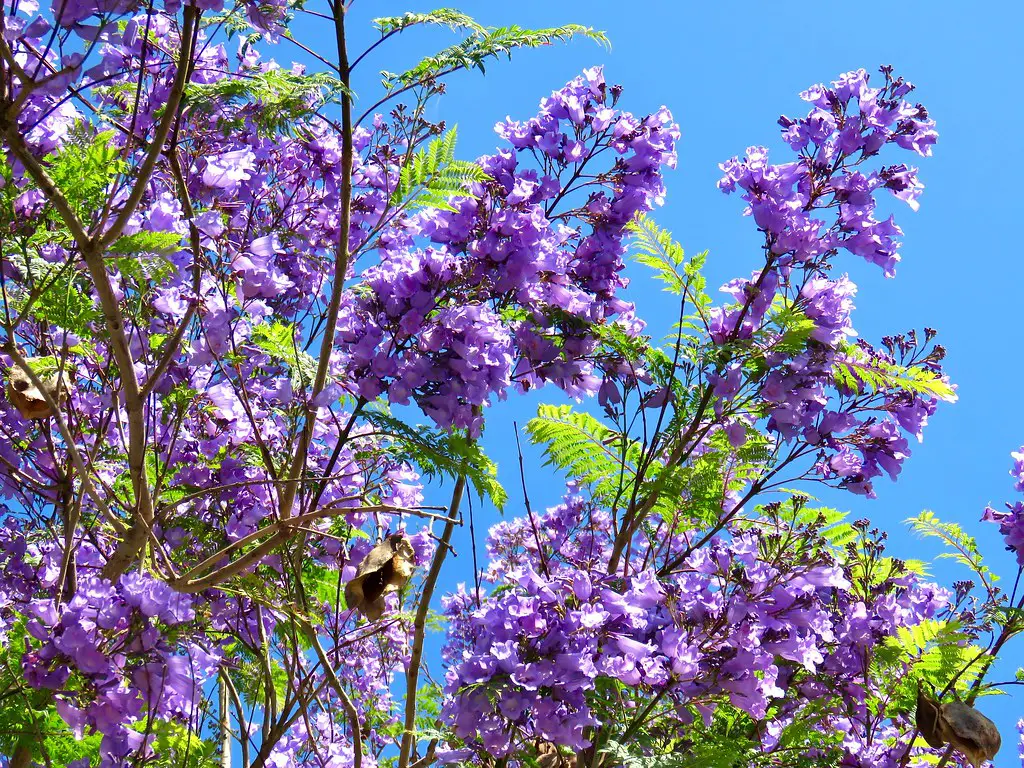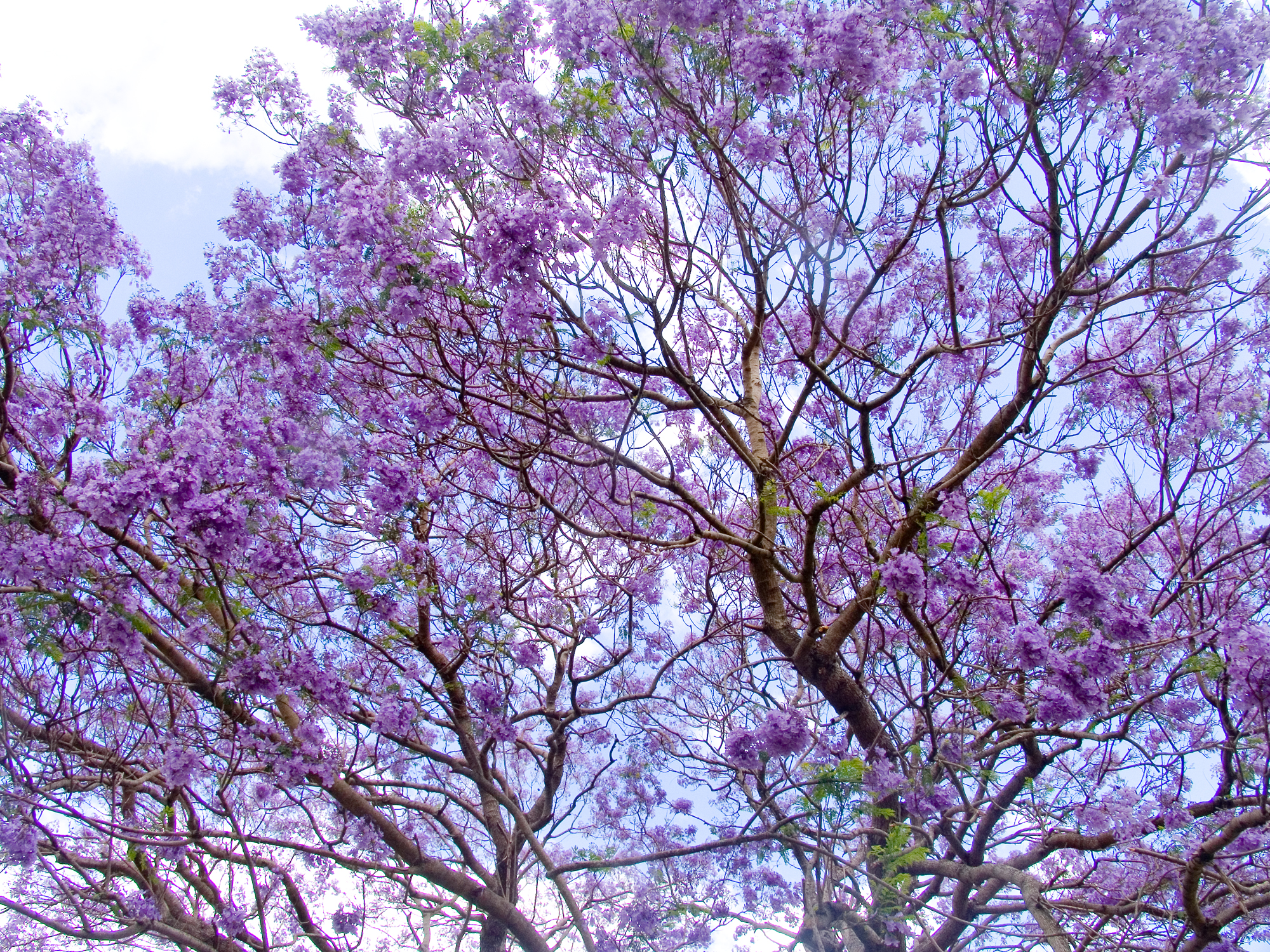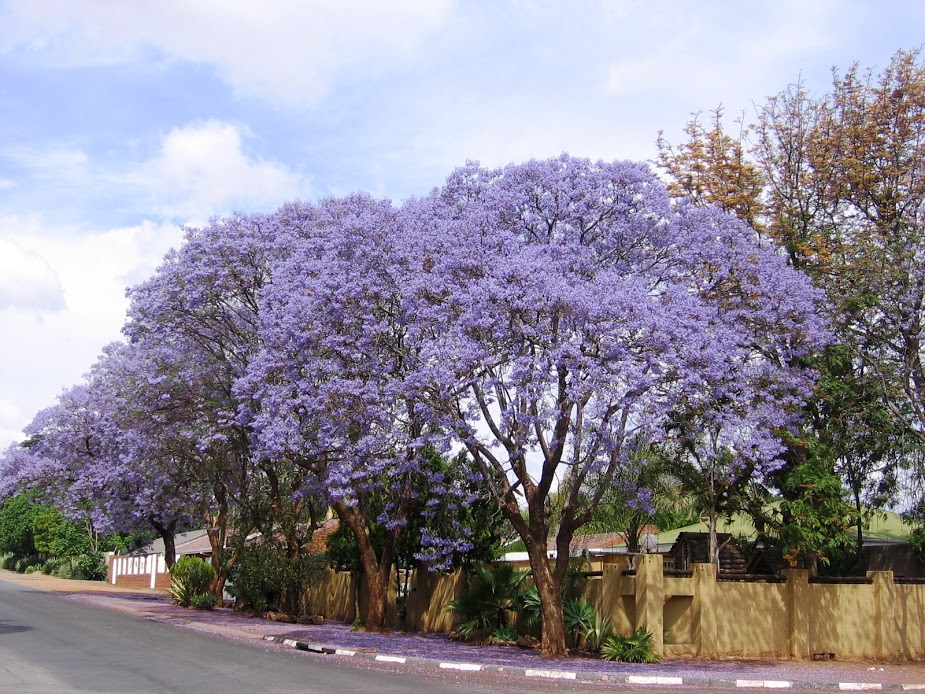Jacaranda trees, with their stunning lavender-blue flowers and fast-growing nature, are a popular choice for many homeowners and landscapers. In this article, we will delve into the pros and cons of planting Jacaranda trees to help you make an informed decision about whether they are the right fit for your outdoor space.
| Pros of Jacaranda Trees | Cons of Jacaranda Trees |
|---|---|
| Beautiful and Fragrant Flowers | Messy |
| – Stunning lavender-blue flowers | – Continuous shedding of flowers and leaves |
| – Enchanting fragrance | |
| Fast-Growing | Brittle Branches |
| – Rapid growth | – Susceptible to breakage in high winds |
| – Quick establishment | – Safety hazards to people and property |
| – Ideal for shade and visual appeal | |
| Adaptability | Shallow Roots |
| – Thrives in various soil types | – Can lift sidewalks and driveways |
| – Suitable for diverse climates | – Potential for costly repairs |
| – Tolerant of different conditions | |
| Provides Ample Shade | Invasiveness |
| – Expansive canopies for shade | – Considered invasive in some regions |
| – Reduces energy consumption | – Displacement of native plants |
| – Impact on local ecosystems | |
| Attracts Pollinators | Susceptibility to Pests and Diseases |
| – Supports local ecosystems | – Vulnerable to various pests and diseases |
| – Enhances garden biodiversity | – Requires monitoring and preventive measures |
PRO: Beautiful and Fragrant Flowers

One of the most enchanting aspects of Jacaranda trees is their striking lavender-blue flowers. These blossoms not only captivate the eyes but also infuse the surrounding air with a delightful fragrance. The beauty and aroma they bring to your garden are unparalleled.
The vivid, lavender-blue flowers of Jacaranda trees are a sight to behold. They create a stunning visual spectacle that can transform any outdoor space into a work of art. The vibrant color and delicate, trumpet-shaped petals make Jacaranda flowers a favorite among garden enthusiasts.
Moreover, the fragrance emitted by these flowers is nothing short of enchanting. The sweet scent wafts through the air, creating a serene and calming atmosphere in your garden. It’s like having a natural air freshener that refreshes your senses with every breeze.
Table of Contents
PRO: Fast-Growing

Jacaranda trees are renowned for their rapid growth. If you’re looking to add shade and aesthetic appeal to your landscape quickly, these trees are an excellent choice. In just a few years, they can soar to heights of up to 30 feet and spread up to 20 feet wide.
The fast growth of Jacaranda trees is a significant advantage for those who want to establish a mature and lush landscape in a relatively short time. Whether you’re planting them to create a shaded area for outdoor gatherings or simply to enhance the visual appeal of your property, Jacaranda trees won’t keep you waiting for long.
Their speedy growth also makes them ideal for filling in gaps in your garden or providing privacy screening. With proper care and maintenance, you can enjoy the benefits of their lush foliage and beautiful flowers sooner rather than later.
PRO: Adaptability

Jacaranda trees are remarkably adaptable to various soil types and climates. Whether your region experiences occasional droughts or receives abundant rainfall, these trees can thrive. They are equally at home in full sun or partial shade, making them versatile additions to any garden.
The adaptability of Jacaranda trees extends to a wide range of soil conditions. They can tolerate different soil types, from sandy to clayey, as long as there is adequate drainage. This flexibility makes them suitable for a variety of landscaping projects.
Furthermore, Jacaranda trees can flourish in diverse climates, from arid regions with scorching summers to more temperate areas. Their ability to thrive under different conditions makes them a dependable choice for gardeners across various geographical locations.
PRO: Provides Ample Shade
With their expansive canopies, Jacaranda trees offer generous shade during the scorching summer months. This natural shade not only enhances the comfort of your outdoor spaces but also helps keep your home cooler, reducing energy consumption.
The shade provided by Jacaranda trees is a valuable asset, especially in regions with hot and sunny summers. It creates a more comfortable environment for outdoor activities, such as picnics, barbecues, or simply relaxing in the shade.
In addition to improving the outdoor living experience, the shade cast by Jacaranda trees can have practical benefits for your home. By reducing direct sunlight on your house, they help lower indoor temperatures, reducing the need for excessive air conditioning during the summer months and potentially saving on energy costs.
PRO: Attracts Pollinators
Jacaranda trees play a vital role in supporting local ecosystems by attracting pollinators such as bees, butterflies, and other insects. The nectar and pollen produced by their flowers serve as a valuable food source for these essential creatures.
The ecological significance of Jacaranda trees cannot be overstated. By providing nectar and pollen, they contribute to the health and well-being of pollinators, which, in turn, play a crucial role in the pollination of other plants in your garden.
Furthermore, attracting pollinators can lead to increased biodiversity in your outdoor space. As various insects visit Jacaranda flowers, they create a dynamic and vibrant ecosystem that can enhance the overall balance and beauty of your garden.
CON: Messy

While Jacaranda trees are undeniably beautiful, they are equally notorious for being messy. Throughout the year, they shed their flowers and leaves, necessitating regular cleanup. This can be a time-consuming task for homeowners who prefer a pristine garden.
One of the significant drawbacks of Jacaranda trees is the mess they create. The beautiful flowers that captivate your senses eventually fall to the ground, creating a colorful carpet that requires continuous raking or blowing to maintain a tidy appearance.
The shedding of leaves is another aspect of their messiness. Jacaranda trees are not evergreen, and they drop their leaves annually. This seasonal leaf drop can add to the overall cleanup workload, especially if you have multiple Jacaranda trees on your property.
CON: Brittle Branches

Jacaranda trees have branches that are susceptible to breakage, especially in high winds. This poses a potential hazard to people and property, requiring careful maintenance and pruning to mitigate the risks.
The structural integrity of Jacaranda trees can be a cause for concern. The branches, although visually appealing when covered in lush foliage and blossoms, can become brittle and prone to snapping in adverse weather conditions.
High winds, storms, or even the weight of accumulated rainwater on their broad leaves can lead to branch breakage. This not only poses safety hazards but can also result in damage to buildings, vehicles, or other structures located beneath these trees.
CON: Shallow Roots
Another drawback of Jacaranda trees is their shallow root system. These roots can lift sidewalks and driveways, causing inconveniences and requiring costly repairs. Proper planning and management of root growth are essential to prevent such issues.
Jacaranda trees may have expansive canopies, but their root systems don’t mirror their above-ground grandeur. In fact, their roots tend to spread shallowly rather than deep into the soil.
This shallow root system can be problematic, particularly for homeowners with paved surfaces near the trees. The roots have the potential to lift and damage sidewalks, driveways, and even the foundations of nearby structures. Addressing this issue may involve root pruning or carefully considering the placement of Jacaranda trees in your landscape.
CON: Invasiveness
In certain regions, Jacaranda trees are considered invasive. Their rapid growth can lead to the displacement of native plants, disrupting local ecosystems. It’s crucial to check the suitability of Jacaranda trees for your area before planting them.
While Jacaranda trees are prized for their beauty, they can also be a cause for concern in some environments. Invasive tendencies make them a threat to native plant species and the delicate balance of local ecosystems.
Invasive plants like Jacaranda can outcompete native vegetation, reducing biodiversity and altering the landscape’s natural composition. This can have far-reaching ecological consequences, affecting not only plant life but also the animals that depend on native plants for food and shelter.
CON: Susceptibility to Pests and Diseases
Jacaranda trees are susceptible to a range of pests and diseases that can harm their health and appearance. Regular monitoring and preventive measures may be necessary to ensure their well-being.
Despite their hardy reputation, Jacaranda trees are not immune to pests and diseases. Various insects and pathogens can target these trees, potentially compromising their vitality and aesthetics.
Common pests that affect Jacaranda trees include aphids, scales, and caterpillars. These pests can feed on the tree’s leaves and disrupt its growth. Additionally, fungal diseases such as powdery mildew and root rot can take hold, leading to leaf discoloration, wilting, and other issues.
Conclusion
In conclusion, Jacaranda trees are undoubtedly captivating and fast-growing additions to any landscape. Their beautiful flowers, adaptability, and shade-providing canopies make them a favored choice for many garden enthusiasts. However, it’s important to be aware of their drawbacks, including their messiness, brittle branches, shallow roots, invasiveness, and susceptibility to pests and diseases.
Before deciding to plant a Jacaranda tree, carefully weigh the pros and cons to determine if they align with your gardening goals and your ability to manage their maintenance requirements. With the right care and consideration, Jacaranda trees can flourish and enhance the beauty of your outdoor space.
FAQ: Jacaranda Trees
1. How tall and wide do Jacaranda trees typically grow?
Jacaranda trees can grow up to 30 feet tall and spread out to approximately 20 feet wide in just a few years, making them ideal for providing shade and beauty to your landscape relatively quickly.
2. Are Jacaranda trees suitable for all types of soil and climates?
Yes, Jacaranda trees are adaptable and can thrive in various soil types and climates. They can tolerate different soil conditions, from sandy to clayey, and are equally at home in regions with occasional droughts or abundant rainfall.
3. What makes Jacaranda trees attractive to pollinators?
Jacaranda trees produce nectar and pollen-rich flowers that attract bees, butterflies, and other pollinators. These insects are drawn to the flowers’ sweet fragrance and serve as essential contributors to local ecosystems.
4. How can I deal with the messiness of Jacaranda trees?
To manage the mess created by Jacaranda trees, regular cleanup is essential, particularly when they shed their flowers and leaves. Raking or blowing fallen petals and leaves can help maintain a tidy garden.
5. Are Jacaranda trees prone to branch breakage in windy conditions?
Yes, Jacaranda trees can have brittle branches that are susceptible to breakage, especially during high winds or storms. Proper pruning and maintenance are crucial to reduce the risk of branch damage.
6. How deep do the roots of Jacaranda trees typically grow?
Jacaranda trees have shallow root systems that spread close to the surface. This characteristic can lead to issues like lifted sidewalks and driveways, requiring careful root management.
7. Can Jacaranda trees become invasive in certain regions?
Yes, Jacaranda trees are considered invasive in some areas, where they can outcompete native plants and disrupt local ecosystems. It’s essential to check local regulations and suitability before planting them.
8. What pests and diseases are common concerns for Jacaranda trees?
Jacaranda trees are susceptible to various pests such as aphids, scales, and caterpillars. They can also suffer from fungal diseases like powdery mildew and root rot. Regular monitoring and preventive measures are advisable.
9. Do Jacaranda trees require special care to thrive?
While they are adaptable, Jacaranda trees benefit from regular maintenance, including pruning to strengthen branches and promote healthy growth. Adequate watering and occasional fertilization can also support their well-being.
10. Can Jacaranda trees be a good choice for providing shade to my outdoor spaces?
Absolutely! Jacaranda trees are known for their expansive canopies, making them excellent choices for providing ample shade during the summer months. This natural shade not only enhances comfort but can also help reduce energy consumption in your home.
Jacaranda Tree Quiz
1. What color are the flowers of Jacaranda trees known for?
- a) Red
- b) Yellow
- c) Lavender-blue
- d) White
2. How tall can Jacaranda trees grow in just a few years?
- a) Up to 10 feet
- b) Up to 20 feet
- c) Up to 30 feet
- d) Up to 40 feet
3. What do Jacaranda tree flowers attract with their nectar and pollen?
- a) Birds
- b) Squirrels
- c) Bees, butterflies, and other pollinators
- d) Insects
4. What is a common issue associated with Jacaranda trees due to their flowers and leaves?
- a) Pests infestation
- b) Brittle branches
- c) Invasive growth
- d) Messiness
5. What type of climate can Jacaranda trees adapt to?
- a) Tropical only
- b) Temperate only
- c) They can adapt to various climates
- d) Arid regions only
6. What precaution should you take to prevent damage from brittle branches of Jacaranda trees during high winds?
- a) Install windbreaks around the tree
- b) Prune the branches regularly
- c) Wrap the branches with cloth
- d) Nothing, they are naturally wind-resistant
7. What is a common issue associated with Jacaranda tree roots?
- a) Deep roots causing foundation damage
- b) Rapid root decay
- c) Shallow roots lifting sidewalks and driveways
- d) Roots attracting pests
8. In which regions can Jacaranda trees become invasive and disrupt local ecosystems?
- a) They are never invasive
- b) Arid regions only
- c) Certain temperate regions
- d) Tropical regions only
9. What should you do to protect Jacaranda trees from common pests and diseases?
- a) Apply excessive amounts of fertilizer
- b) Avoid all pesticides
- c) Regularly monitor and apply appropriate treatments
- d) Prune the tree aggressively
10. What benefit do Jacaranda trees provide in addition to their beauty?
- a) They purify the air
- b) They repel mosquitoes
- c) They provide abundant fruit
- d) They offer ample shade
© 2024 Lotusmagus.com. All rights reserved. This content is protected by copyright. Visit Lotusmagus.com for more information.

